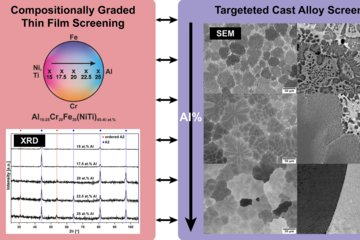All genres
861.
Poster
Micromechanical investigation of solder joints for automotive microelectronics. Nano- and Micromechanical Testing in Materials Research and Development IV, Olhão Algarve, Portugal (2013)
862.
Poster
Micromechanical investigation of lead-free solder joints in microelectronics. Small Scale Plasticity School, Cargèse, Korsika, France (2013)
863.
Poster
Microstructural studies of Cu–Cr thin film structures grown by molecular beam epitaxy using advanced transmission electron microscopy. Macan Theromodynamics Workshop, Istanbul, Turkey (2012)
864.
Poster
Thermo-mechanical investigation of lead-free solder. GDRi MECANO General Meeting 2012, Ecole de Mines, Paris, France (2012)
865.
Poster
In-situ fracture study of thin Cu films on polyimide substrate. GDRi MECANO General Meeting 2012, Ecole de Mines, Paris, France (2012)
866.
Poster
Size effect in metallic thin films characterized by low-temperature X-ray diffraction. Gordon Research Conference on thin film & smallscale mechanical behavior , Colby College Waterville, Maine, USA (2006)
867.
Poster
Size effect in metallic thin films characterized by low-temperature X-ray diffraction. 55th Annual Denver X-ray Conference, Denver, CO, USA (2006)
868.
Poster
Micron beam bending and compression tests - micromechanical properties of copper. 7th European Symposium on nano-mechanical testing, Hückelhoven, Germany (2006)
869.
Poster
Microstructural investigation of the deformation zone below nanoindents in copper, silver and nickel. Hysitron Workshop and Usermeeting, München, Germany (2006)
870.
Teaching
Mechanische Eigenschaften in kleinen Dimensionen. Lecture: SS 2024, Ruhr-Universität Bochum, June 17, 2024 - June 25, 2024
871.
Teaching
Transmissionselektronenmikroskopie für Fortgeschrittene. Lecture: WS 2024/2025, Ruhr-Universität Bochum, 2024-10 - 2025-03
872.
Teaching
Atomare Charakterisierung von Werkstoffen. Lecture: WS 2024/2025, Heinrich-Heine Universität Düsseldorf, October 26, 2024 - February 12, 2025
873.
Teaching
Mechanische Eigenschaften in kleinen Dimensionen. Lecture: SS 2023, Ruhr-Universität Bochum, June 01, 2023 - June 30, 2023
874.
Teaching
Transmissionselektronenmikroskopie für Fortgeschrittene. Lecture: WS 2023/2024, Ruhr-Universität Bochum, 2023-10 - 2024-03
875.
Teaching
Atomare Charakterisierung von Werkstoffen. Lecture: WS 2023/2024, Heinrich-Heine Universität Düsseldorf, October 26, 2023 - February 12, 2024
876.
Teaching
Mechanische Eigenschaften in kleinen Dimensionen. Lecture: SS 2022, Ruhr-Universität Bochum, June 01, 2022 - June 30, 2022
877.
Teaching
Transmissionselektronenmikroskopie für Fortgeschrittene. Lecture: WS 2022/2023, Ruhr-Universität Bochum, 2022-10 - 2023-03
878.
Teaching
Atomare Charakterisierung von Werkstoffen. Lecture: WS 2022/2023, Heinrich-Heine Universität Düsseldorf, October 26, 2022 - February 12, 2023
879.
Teaching
Mechanische Eigenschaften in kleinen Dimensionen. Lecture: SS 2021, Ruhr-Universität Bochum, April 20, 2021 - July 17, 2021
880.
Teaching
Transmissionselektronenmikroskopie für Fortgeschrittene. Lecture: WS 2021/2022, Ruhr-Universität Bochum, 2021-10 - 2022-03











